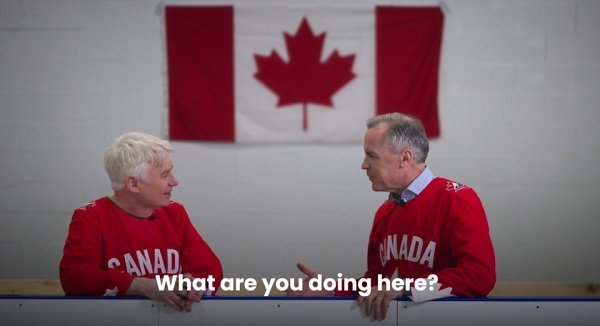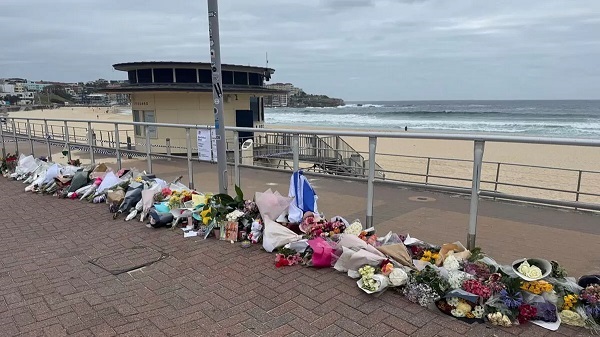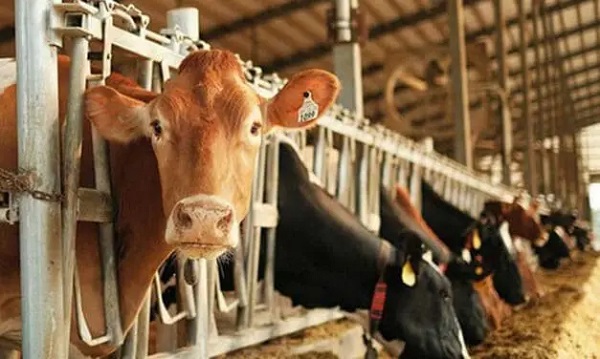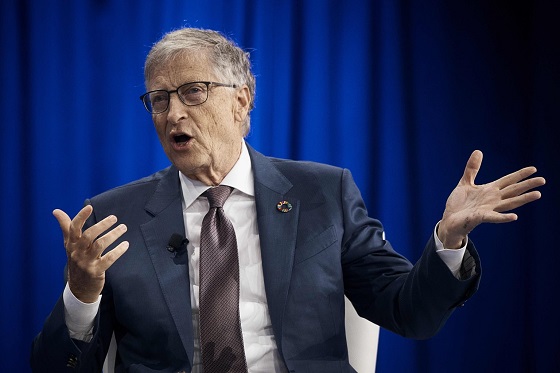Uncategorized
At Southeast Asian summit, pushback against going it alone

SINGAPORE — The annual gathering of Southeast Asian leaders began Tuesday with a warning from the host, Singapore Prime Minister Lee Hsien Loong, about threats against international rules that underpin world stability and economic growth.
“The international order is at a turning point,” Lee said at the opening ceremony of the summit of the 10-nation Association of Southeast Asian Nations.
“The existing free, open and rules-based multilateral system, which has underpinned ASEAN’s growth and stability, has come under stress,” Lee said.
U.S. President Donald Trump’s “America First” foreign policy and his resistance to multilateral agreements and institutions are viewed as an affront and a challenge in a region whose modern economies are largely driven by global trade.
Among issues on the agenda for ASEAN and other leaders attending meetings in Singapore this week, including U.S.
Lee said ASEAN and other participating countries including India and China, but not the United States, have made “substantive progress” on the market-opening initiative, called the Regional Comprehensive Economic Partnership.
However, it’s unclear if a deal will be reached in Singapore. Participants say India, for one, is balking at opening its markets wider to imports from China under the accord.
Trump is staying away from the Singapore summit, and also from the annual meetings of the Asia-Pacific Economic Cooperation forum that will begin later this week in Port Moresby, Papua New Guinea.
Chinese leaders are busy burnishing their own free trade credentials as they speak out against Trump’s efforts to get Beijing to change policies aimed at making Chinese industries leaders in advanced technologies.
Three days after taking office, Trump pulled out of a Pacific Rim trade initiative, the Trans-Pacific Partnership. He has ordered punitive tariffs on billions of dollars of Chinese products, among other measures, to address complaints over the U.S. trade deficit, China’s technology policies and other market access issues.
“All countries are linked in the same industrial chain in the world today and China and the U.S. are an important part of it. No one wants or expects to see an interruption of it,” Chinese Premier Li Keqiang said Tuesday in a lecture on the sidelines of the summit.
ASEAN groups Brunei, Cambodia, Indonesia, Laos, Malaysia, Myanmar, the Philippines, Singapore, Thailand and Vietnam.
The globalization of manufacturing has been a key factor driving dynamic growth in the regional economy, which has more than doubled in size since 2007 to $2.8 trillion in 2017.
The momentum must be in the direction of more, not less, open trade, said Malaysian Prime Minister Mahathir Mohamad.
Otherwise, he warned, there could be a “domino effect” in which countries engage in increasingly protective measures against their rivals.
Inward-looking, protectionist policies have gained ground in ASEAN as elsewhere, he said.
“This is not the time to close our doors by invoking trade protectionism measures but instead we should be actively engaged in finding amicable solutions,” Mahathir said. “It is now that we must continue to expand our intraregional trade and deepen the economic integration within ASEAN.”
While talks on the ASEAN-
Renamed the Comprehensive and Progressive Trans-Pacific Partnership, it is due to take effect on Dec. 30.
Several other economies are hoping to join the pan-Pacific accord, including the Philippines and South Korea.
Japanese media reported that Taiwan’s representative in the Asia-Pacific Economic Cooperation forum, former chairman of Taiwan Semiconductor Manufacturing Co. Morris Chang, plans to ask Japan to back the island’s request to also become a member.
___
Associated Press video journalist Jerry Harmer contributed to this report.
Annabelle Liang And Elaine Kurtenbach, The Associated Press
Uncategorized
Cost of bureaucracy balloons 80 per cent in 10 years: Public Accounts

The cost of the bureaucracy increased by $6 billion last year, according to newly released numbers in Public Accounts disclosures. The Canadian Taxpayers Federation is calling on Prime Minister Mark Carney to immediately shrink the bureaucracy.
“The Public Accounts show the cost of the federal bureaucracy is out of control,” said Franco Terrazzano, CTF Federal Director. “Tinkering around the edges won’t cut it, Carney needs to take urgent action to shrink the bloated federal bureaucracy.”
The federal bureaucracy cost taxpayers $71.4 billion in 2024-25, according to the Public Accounts. The cost of the federal bureaucracy increased by $6 billion, or more than nine per cent, over the last year.
The federal bureaucracy cost taxpayers $39.6 billion in 2015-16, according to the Public Accounts. That means the cost of the federal bureaucracy increased 80 per cent over the last 10 years. The government added 99,000 extra bureaucrats between 2015-16 and 2024-25.
Half of Canadians say federal services have gotten worse since 2016, despite the massive increase in the federal bureaucracy, according to a Leger poll.
Not only has the size of the bureaucracy increased, the cost of consultants, contractors and outsourcing has increased as well. The government spent $23.1 billion on “professional and special services” last year, according to the Public Accounts. That’s an 11 per cent increase over the previous year. The government’s spending on professional and special services more than doubled since 2015-16.
“Taxpayers should not be paying way more for in-house government bureaucrats and way more for outside help,” Terrazzano said. “Mere promises to find minor savings in the federal bureaucracy won’t fix Canada’s finances.
“Taxpayers need Carney to take urgent action and significantly cut the number of bureaucrats now.”
Table: Cost of bureaucracy and professional and special services, Public Accounts
| Year | Bureaucracy | Professional and special services |
|
$71,369,677,000 |
$23,145,218,000 |
|
|
$65,326,643,000 |
$20,771,477,000 |
|
|
$56,467,851,000 |
$18,591,373,000 |
|
|
$60,676,243,000 |
$17,511,078,000 |
|
|
$52,984,272,000 |
$14,720,455,000 |
|
|
$46,349,166,000 |
$13,334,341,000 |
|
|
$46,131,628,000 |
$12,940,395,000 |
|
|
$45,262,821,000 |
$12,950,619,000 |
|
|
$38,909,594,000 |
$11,910,257,000 |
|
|
$39,616,656,000 |
$11,082,974,000 |
Uncategorized
Trump Admin Establishing Council To Make Buildings Beautiful Again


From the Daily Caller News Foundation
By Jason Hopkins
The Trump administration is creating a first-of-its-kind task force aimed at ushering in a new “Golden Age” of beautiful infrastructure across the U.S.
The Department of Transportation (DOT) will announce the establishment of the Beautifying Transportation Infrastructure Council (BTIC) on Thursday, the Daily Caller News Foundation exclusively learned. The BTIC seeks to advise Transportation Secretary Sean Duffy on design and policy ideas for key infrastructure projects, including highways, bridges and transit hubs.
“What happened to our country’s proud tradition of building great, big, beautiful things?” Duffy said in a statement shared with the DCNF. “It’s time the design for America’s latest infrastructure projects reflects our nation’s strength, pride, and promise.”
“We’re engaging the best and brightest minds in architectural design and engineering to make beautiful structures that move you and bring about a new Golden Age of Transportation,” Duffy continued.
Mini scoop – here is the DOT’s rollout of its Beautifying Transportation Infrastructure Council, which will be tasked with making our buildings beautiful again. pic.twitter.com/
9iV2xSxdJM — Jason Hopkins (@jasonhopkinsdc) October 23, 2025
The DOT is encouraging nominations of the country’s best architects, urban planners, artists and others to serve on the council, according to the department. While ensuring that efficiency and safety remain a top priority, the BTIC will provide guidance on projects that “enhance” public areas and develop aesthetic performance metrics.
The new council aligns with an executive order signed by President Donald Trump in August 2025 regarding infrastructure. The “Making Federal Architecture Beautiful Again” order calls for federal public buildings in the country to “respect regional architectural heritage” and aims to prevent federal construction projects from using modernist and brutalist architecture styles, instead returning to a classical style.
“The Founders, in line with great societies before them, attached great importance to Federal civic architecture,” Trump’s order stated. “They wanted America’s public buildings to inspire the American people and encourage civic virtue.”
“President George Washington and Secretary of State Thomas Jefferson consciously modeled the most important buildings in Washington, D.C., on the classical architecture of ancient Athens and Rome,” the order continued. “Because of their proven ability to meet these requirements, classical and traditional architecture are preferred modes of architectural design.”
The DOT invested millions in major infrastructure projects since Trump’s return to the White House. Duffy announced in August a $43 million transformation initiative of the New York Penn Station in New York City and in September unveiledmajor progress in the rehabilitation and modernization of Washington Union Station in Washington, D.C.
The BTIC will comprise up to 11 members who will serve two-year terms, with the chance to be reappointed, according to the DOT. The task force will meet biannually. The deadline for nominations will end Nov. 21.
-

 Crime13 hours ago
Crime13 hours agoBrown University shooter dead of apparent self-inflicted gunshot wound
-

 Business1 day ago
Business1 day agoCanada Hits the Brakes on Population
-

 Crime2 days ago
Crime2 days agoBondi Beach Survivor Says Cops Prevented Her From Fighting Back Against Terrorists
-

 International2 days ago
International2 days agoBondi Beach Shows Why Self-Defense Is a Vital Right
-

 International2 days ago
International2 days agoHouse Rejects Bipartisan Attempt To Block Trump From Using Military Force Against Venezuela
-

 Frontier Centre for Public Policy1 day ago
Frontier Centre for Public Policy1 day agoCanada Lets Child-Porn Offenders Off Easy While Targeting Bible Believers
-

 Crime2 days ago
Crime2 days agoThe Uncomfortable Demographics of Islamist Bloodshed—and Why “Islamophobia” Deflection Increases the Threat
-

 Agriculture1 day ago
Agriculture1 day agoWhy is Canada paying for dairy ‘losses’ during a boom?










